Breed of the Month – The Siamese
[ad name=”Advertise on your own vet”]
[ad name=”Google plus one ad”]
[ad name=”Tweet”]
THE SIAMESE
The Siamese is a complex, intelligent, and graceful cat and (2) one of the most recognizable Oriental cats, believed to be from Thailand, where they are called Wiechen-maat or “Moon Diamond.” (1) (6)
HISTORY
Many tales and myths surround this ancient cat, and is is unmistakably one of the oldest, easily recognized and most popular shorthaired Oriental cats. It also has the distinction of being a natural breed as man played no part in developing it. (7) The Siamese cat originates in Thailand, previously known as Siam. The breed dates back many centuries. Siamese cats were first mentioned in manuscripts called “Tamra Maew” between the 14th and 18th centuries,(1)(3) believed to be the oldest recorded documents describing domestic cats. (3) In the National Library in Bangkok, there are manuscripts from the ancient city of Ayudha, founded in 1350, showing native cats, with black tails, feet and ears and a white body and blue eyes. (4)(7) It was considered an honor for any foreigner to be presented with one of the Royal Cats of Siam, and it meant death for one of these cats to be stolen from court. (2)
It is believed that they are descendants of the sacred temple cats in Siam. (6) Legend has it that they kept away evil spirits, bringing their owners good luck. (6) Original Siamese cats were closely guarded in temples to keep the breed pure and were certainly not a ‘commoner’s cat.’ (7)It is said that a Siamese female was set to guard a goblet in a Buddhist temple. So worried was the queen that the goblet might go astray, she wound her tail tightly around its stem and it became permanently kinked. She never let her eyes wander, and over time, her eyes developed a squint. Later she produced a litter of kittens – all with kinked tails and squints, due to her vigilance in guarding the treasure. Ownership was restricted to Royalty. Only if a man was promoted to a knight or nobleman could he possess the cat with “special powers.” (4)(7)
Siamese cats were first seen outside Asia in 1884, when the British Consul-General in Bangkok, Edward Blencowe Gould, brought a breeding pair, Pho and Mia, back to Britain.(1) The cats were given to his sister Ms Velvey who started a breeding program and continued to import cats from a cattery in Bangkok. (7)In 1885, Pho and Mia produced 3 kittens, which all unfortunately died soon after a show at London’s Crystal Palace. Wankee, born in 1895 in Hong Kong, became the first U.K. champion in 1898. (1) In 1878, U.S. President Rutherford B. Hayes also received “Siam”, a gift from the American Consul in Bangkok. (1)(6) In 1884, a French Diplomat, August Pavie, brought two cats back from Thailand to France. (7) The breed soon spread to other parts of Europe and Asia. (6)
Compared to familiar British cats, Siamese had longer and less “cobby” bodies, less rounded heads, wedge-shaped muzzles and larger ears. Fanciers imported cats, forming the base breeding pool for the breed in Britain. Today, most British Siameses are descended from about 11 of the original imports. In the 1950s – 1960s, breeders and cat show judges began to prefer a more slender look. By selectively breeding, they created increasingly long, fine-boned, narrow-headed cats. Breeders who preferred the original style could not longer compete in the show ring and by the mid-1980s, those cats had disappeared from cat shows. However, some breeders continued to breed them, resulting in two types – the modern “show-style” Siamese, and the “traditional” Siamese, called “Old Style Siamese”, “Classic Siamese”, and “Appleheads.” (1)
APPEARANCE
This breed of cat is the most popular of all the short haired cats, distinguished by its long, slender body and triangular face. The classic, wedge-shaped head, large ears and long, slender tail are its key features. (3) They have hypnotic, slanting sapphire blue eyes and an unusual pointed coat pattern, light on the neck and body and darker on the the ears, face, paws and tail. (6)(2)(4) The Siamese is a medium-sized cat; flexible, but with a definite muscular, sturdy feel. (1)(3) The legs are long and slender, and the oval feet elegantly small. (5)
The head should be triangular with large, low-set, wide-spaced ears, tapering to a pointed muzzle, (1)(2) with a straight, unbroken nose, and a firm jaw that isn’t under- or over-shot. The eyes should be almond-shaped with a Oriental slant, and no squint. (1)(2) The tail should be long, slender, in proportion to the cat’s length and it should taper to a whip-like end. A kink or malformation is a serious fault. (2) The ears are large and wide based, placed towards the side of the head, forming a triangle from the tip of the nose to each ear tip. (1) Early Siamese tended to have eye squints and kinked tails, but with careful, selective breeding this has been mostly eliminated. (2)(1) The squint is a compensatory mechanism because of the abnormal uncrossed wiring of the optic chiasm, produced by the same albino allele that produces coloured points. (1)(4) The kinked tail persists among street cats in Thailand. (4)
The Siamese is known for its typical pointed color scheme. (1) Siamese were originally a pale milky colour, with seal points, In the late 1800’s the first blue-point was recorded in the UK. (2)(1) Siamese cats are now bred in a wide variety of colors. (5) The soft, fine, glossy fur should sit tightly on the body with no undercoat. (1)(5) The colored points should only be seen on the mask area of the face, the ears, legs and tail. It is a fault for the cat to have lighter colors in these areas, especially “spectacles” around the eyes. Darker shading is frowned upon on the paler body parts. (2)
The pointed pattern is a form of partial albinism, caused by a mutation in tyrosinase, an enzyme that produces melanin. Tyrosinase is heat-sensitive; and only active in cooler parts of the body, causing dark colouration in the extremities and the face. (1) Thus, if a cat has been shaved, the coat may temporarily darken in that area, and Siamese living in warmer areas have paler coats than those in cooler regions.(1)(2)(3) The albino gene is recessive – both parents have to carry it in order to produce offspring of Siamese colouring. (3) The pointed areas must be a uniform colour with no barring or stripes, except for Tabby-points and Torties. (2) All Siamese kittens are cream or white at birth, but by the age of four weeks, the points are clearly visible. Siamese cats tend to darken with age. (1)(3)
The original colours were seal (dark brown) point, blue (a cool grey) point, chocolate (lighter brown) point, or lilac (pale warm gray) point. (1)(2) Outcrosses with other breeds developed Siamese-mix cats with points in other colours such as Red and Cream point, lynx (tabby) point, and tortoise-shell (“tortie”) point. (1) In the UK, all pointed Siamese-style cats are considered to be Siameses. In the USA, the Cat Fanciers’ Association considers only the four original colours as Siamese. Oriental cats with colourpoints in colours or patterns aside from these four are known as Colorpoint Shorthairs.
The Thai shares some features with the Modern Siamese – the colour pattern and the short single coat, but differs from it in head and body type. It has a “foreign” type – it is elongated, high on the legs, lithe but substantial, with medium boning and a modified wedge head, with rounded cheeks and a wedge shaped muzzle. The ears are large and are higher than the modern Siamese’s ears with almond shaped, not oriental eyes.
TEMPERAMENT
You will never be bored if you own a Siamese cat.(4) Siamese are typical Oriental cats with outgoing personalities. They are friendly, affectionate, intelligent but dominant, creatures which usually get on well with other cats (3)(4) and are the most social of all cat breeds.(6) They are usually “extroverts” but often bond strongly to one person. (1)(4) They can be extremely vocal, noisy and demanding, with a loud, low-pitched voice – known as “Meezer”. (1) Their voice is legendary and they use it well to communicate with people and their meow has been compared to the cries of a baby. The most obvious characteristic of a Siamese cat is that they talk all the time and they have the last word. These cats and even the kittens have a wide variety of words that they use and they enjoy having a chat, to who ever may listen, or not listen – even if it is a dog. (5) They are very talented at communication with humans. If you are looking for a quiet cat, then Siamese cats are not the way to go. They are extremely vocal and express themselves using their voices. While being affectionate their voices are easy on the ears but when feeling neglected they become quite loud.(6)They enjoy being with people and have a great need for human companionship, and to be part of the family. (4) As they do not like to be left alone, they aren’t suitable for people out at work all day. Siamese do not like to be ignored and always have to be the centre of attention. They usually regard themselves as people rather than cats.They can become totally involved in their owner’s life.They are very loyal and loving. (2)(3)(4)
They are active, lively, entertaining and playful, even as adults, and are more dog-like in behavior than other cats. (1)(4) They are a high energy cat who are always on the go. Whatever activity you are engaged in you can be sure that your Siamese cat will be always there helping you out. (4) Siamese can easily adapt to any living situation. Siamese kittens are curious, so keep your kitten away from the swimming pool in case it drowns. (3) They can be less active at night than other cats, as their eyes lack a tapetum lucidum, to amplify dim light in their eyes. The mutation in the Tyrosinase also results in abnormal neurological connections between the eye and the brain. (1)
Most of the Siamese cats like dogs, but the opposite is some times true and then the cat will attack dogs.(5) Whatever a Siamese cat do, it is usually extreme. There is no need to worry how to treat a Siamese cat or kitten, they will train you to do what they want, in no time. (5) They are strangely curious and can be very intelligent. They get easily bored and therefore you should not leave them alone for significant periods of time because they will likely snooping around the house in search of something to play with. Pamper them with affection and lots of attention and they will be happy for your company. Their constant need for attention and admiration makes them great pets for a household with many people or with children. (6)
HEALTH
Siamese and Siamese derived breeds have a higher rate of mortality, living between 10 to 12.5 years. Most deaths are caused by cancers, mainly mammary tumors. They are at higher risk of cancer and gastrointestinal problems but have a lower risk of feline lower urinary tract disease. (1) The most common variety of Progressive retinal atrophy in cats is related to a mutation on the rdAc-gene in Siamese related breeds and a DNA-test is available.(1)
The Siamese Cat will usually live up to 13 or 14 years of age, but it is not unknown for Siamese cats to reach the 20 years. Kidney disease, otherwise known as Chronic Renal Failure is a common cause of death in elderly Siamese cats. (4) I also see many Siameses with diabetes and recurring gingivitis.
The only maintenance these breed of cats need is that they need to be bathed once a month and their coats need to be brushed at least twice a month. Gentle brushing is sufficient as their hair is not very long. (6) Their claws need to be clipped when they are older as they tend to get very long and hook in the carpet when they walk.
RELATED BREEDS
Balinese – a longhaired Siamese. Colours are limited to the four traditional colours.
Burmeses are descendants of Wong Mau, imported from Burma in 1930 by Dr. Joseph Cheesman Thompson. The breed was considered a form of Siamese for many years.
Colorpoint Shorthair – a Siamese-type cat registered in CFA with pointed coat colours aside from the traditional CFA Siamese coat colours.
Himalayan – Longhaired breed derived from crosses of Persians to Siamese and pointed domestic longhair cats in order to introduce the point markings and the colours chocolate and lilac.
Javanese – a longhaired version of the Colorpoint Shorthairn or Oriental Shorthair.
Ocicat – a spotted cat originally produced by a cross between Siamese and Abyssinian.
Oriental Shorthair/Longhair – a Siamese-style cat in non-pointed coat patterns and colours, including solid, tabby, silver/smoke, and tortoise-shell.
Snowshoe – a cream and white breed with blue eyes and some points that was produced by crossing the Siamese and bi-coloured American Shorthair.
Tonkinese – originally a cross between a Siamese cat and a Burmese. (1)
REFERENCES
1. http://en.wikipedia.org/wiki/Siamese_%28cat%29\
2. http://www.kittycat.co.za/Siamese_profile.asp
3. http://www.petsplace.co.za/Siamese.htm
4. http://www.catsofaustralia.com/siamese.htm
5. http://made-in-afrika.com/kittens2cats/siamese.htm
6. http://meow-cats.com/siamese-cat/
7.http://www.catbreedsjunction.com/siamese-cat.html

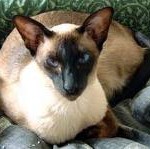
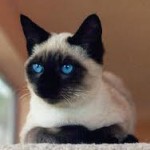

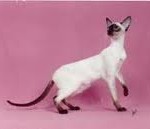
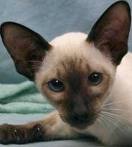
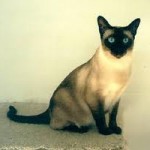

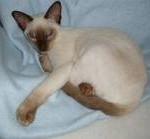

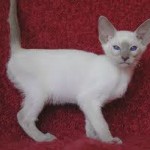



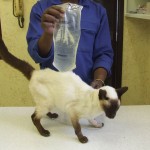
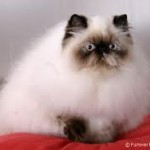
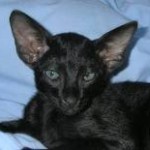
Leave a Reply
You must be logged in to post a comment.